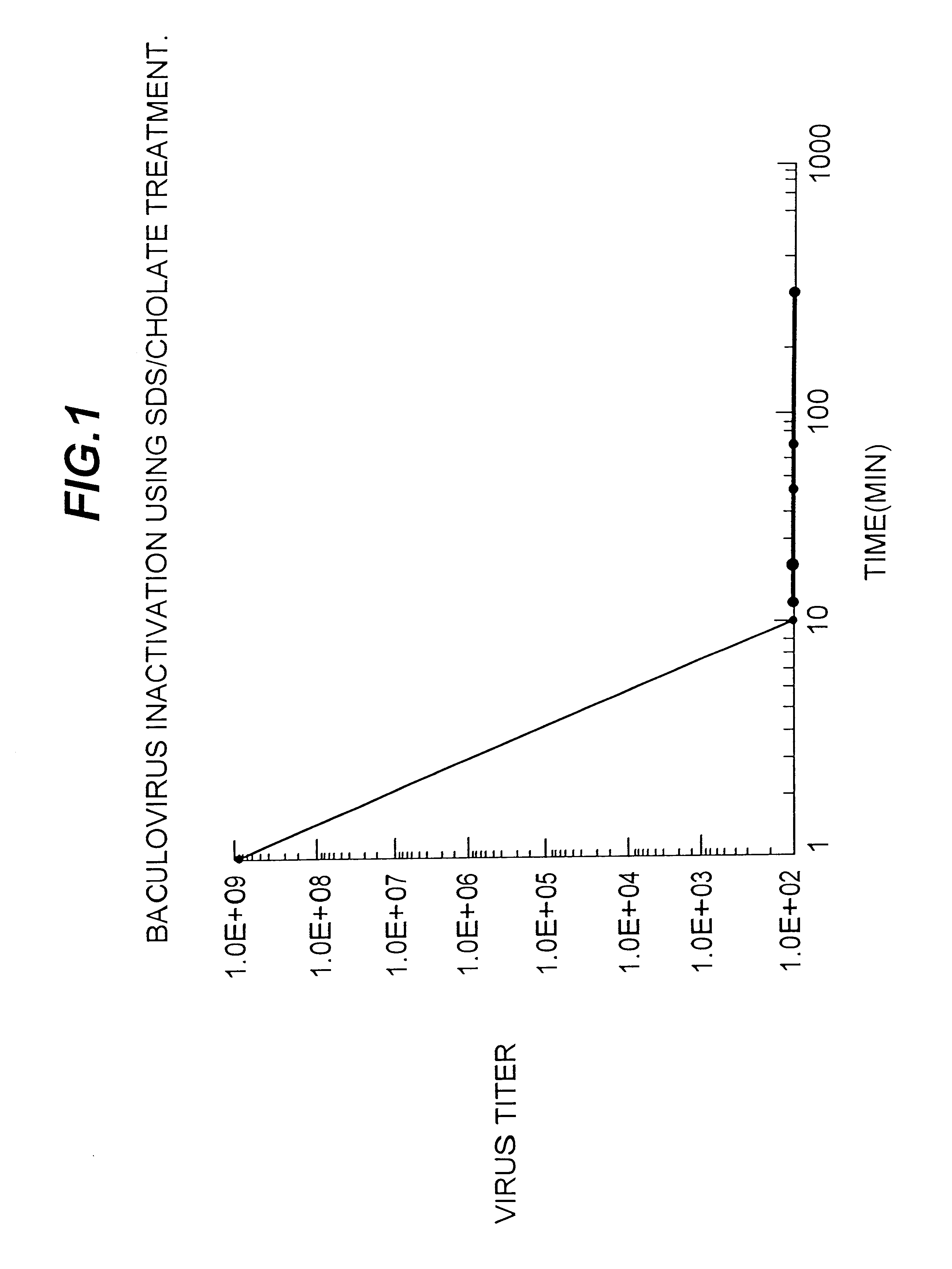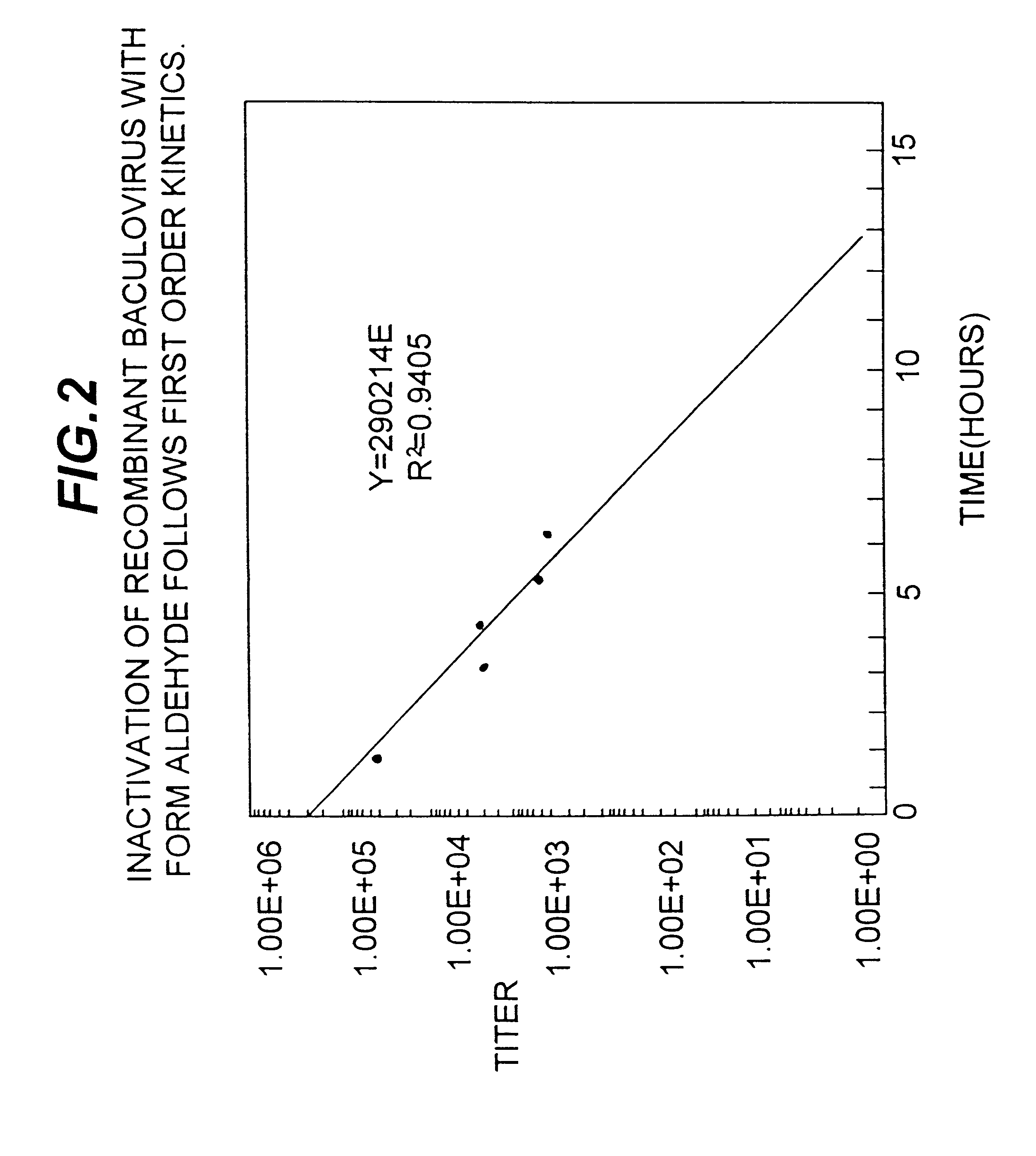Insect cells or fractions as adjuvant for antigens
a technology of insect cells and fractions, applied in the field of insect cells or fractions as adjuvants for antigens, can solve the problems of limited human use, raised as to undesirable effects in animals, unacceptable granulomas, etc., and achieve the effect of enhancing immunogenicity
- Summary
- Abstract
- Description
- Claims
- Application Information
AI Technical Summary
Benefits of technology
Problems solved by technology
Method used
Image
Examples
example 1
Insect Cells as Adjuvant for Antigen Favorably Alters Immune Response to Antigen
This Example illustrates an embodiment of the invention by showing the property of S. frugiperda insect cells to have adjuvant properties that favorably enhance the immune responses to a particular antigen (influenza A / Jalisco / 95 H5 hemagglutinin).
A culture of S. frugiperda insect cells was infected with a recombinant baculovirus engineered to express avian influenza A / Jalisco / 95 H5 hemagglutinin (rHA).
The viral RNA, A / Jalisco / 95 (H5N2) is available and was supplied by Dr. Michael Perdue, Influenza Research, ARS, SEPRL, USDA, Athens, Ga. The entire purified viral RNA was used as a template to make cDNA utilizing Moloney Murine Leukemia Virus (M-MULV) reverse transcriptase. The primer used for cDNA synthesis was a synthetic oligonulceotide primer (5'-AGCAAAAGCAGG-3') (SEQ ID NO: 1) homologous to the end of all influenza gene virion segments.
Amplification of the HA gene by polymerase chain reaction (PCR) u...
example 2
Mechanical and / or Chemical Means to Remove or Otherwise Inactivate Recombinant Baculovirus in Insect Cells for Adjuvant
It is conventional to inactivate viruses in certain vaccine formulations containing inactivated or subunit vaccines. Baculoviruses are rapidly inactivated by the detergent treatments described in Example 1 while the selected recombinant antigen rHA was not denatured as measured by the HA assay for biological activity and for the ability of the rHA vaccine to induce neutralizing antibodies (Table 3). S. frugiperda insect cells infected with a recombinant baculovirus were suspended in 2% cholate, 0.5% SDS containing buffer and disrupted with Polytron.TM.. The aliquots were taken at times indicated in Table 4 and the baculovirus titer determined by plaque assay method. The data presented in Table 4 and FIG. 2 shows that within the first 10 minutes of treatment, recombinant baculovirus infectivity was reduced to undetectable levels.
example 3
Spodoptera frugiperda Insect Cells Subfractionated into Membrane Fraction Containing Membrane Bound Recombinant Proteins and the Fraction Containing Soluble Proteins and Majority of the DNA and RNA
Insect cells expressing avian influenza A / Jalisco / 95 rHA were obtained as described in Example 1. The cells were disrupted in high ionic strength ethanolamine buffer at pH 9.5 with Polytron.TM. homogenizer (Brinkmann Instruments Inc., Westbury, N.Y.) and the membrane fraction was isolated by centrifugation. The membrane fraction was separated from adsorbed proteins by washing with the low ionic strength ethanolamine buffer at pH 9.5. This procedure also reduces the baculovirus titer approximately 1000-fold. The remaining baculovirus can be completely inactivated by treating the pellet with 0.5% formaldehyde. Data presented in Table 5 and FIG. 3 show that the baculovirus inactivation is a first order process and that the baculovirus can be completely eliminated by an overnight treatment of ...
PUM
| Property | Measurement | Unit |
|---|---|---|
| pH | aaaaa | aaaaa |
| composition | aaaaa | aaaaa |
| mechanical | aaaaa | aaaaa |
Abstract
Description
Claims
Application Information
 Login to View More
Login to View More - R&D
- Intellectual Property
- Life Sciences
- Materials
- Tech Scout
- Unparalleled Data Quality
- Higher Quality Content
- 60% Fewer Hallucinations
Browse by: Latest US Patents, China's latest patents, Technical Efficacy Thesaurus, Application Domain, Technology Topic, Popular Technical Reports.
© 2025 PatSnap. All rights reserved.Legal|Privacy policy|Modern Slavery Act Transparency Statement|Sitemap|About US| Contact US: help@patsnap.com


